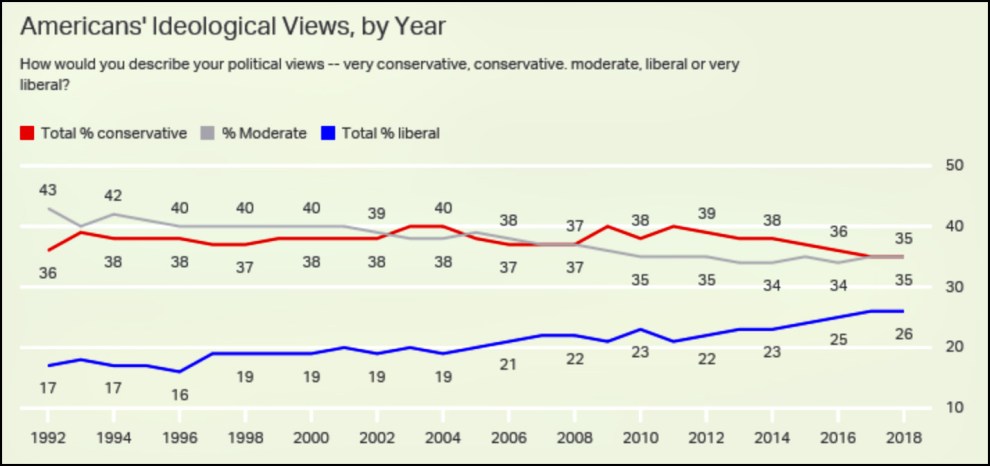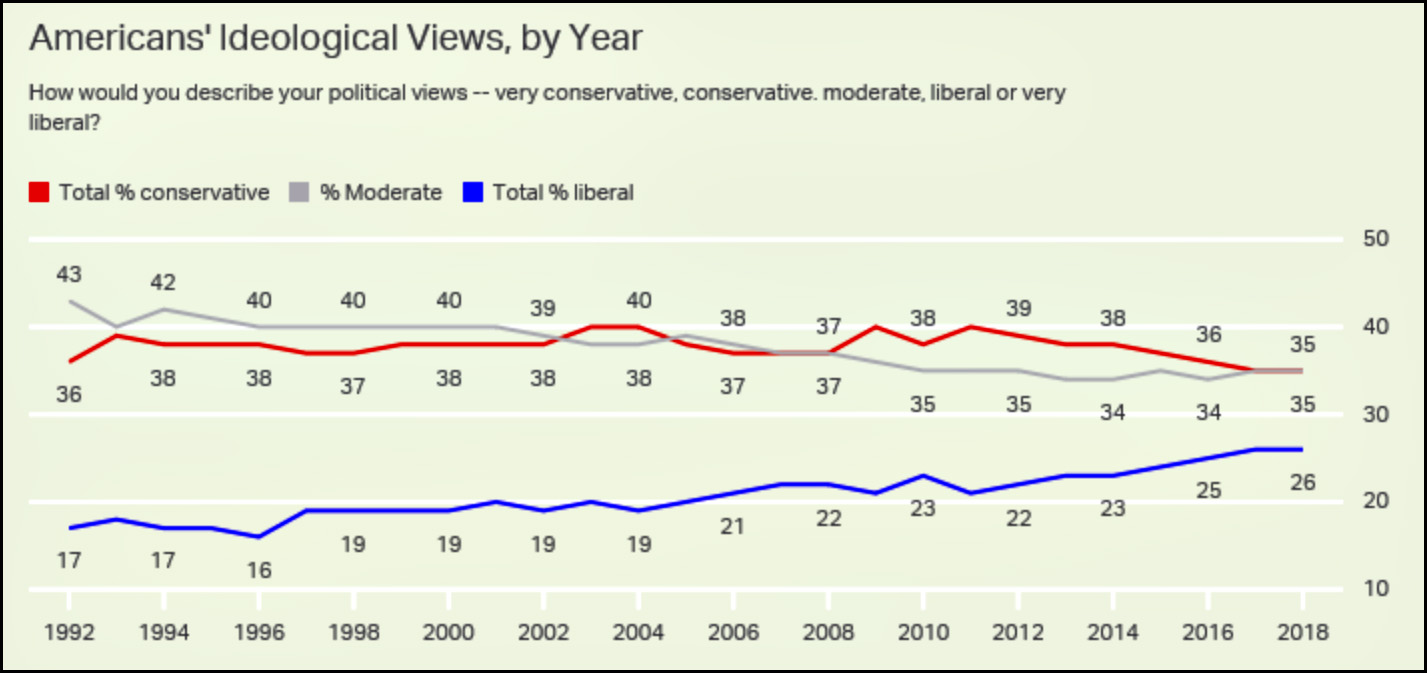
Ezra Klein writes in the New York Times today that Democrats “can move to the left — and they are — but they can’t abandon the center or, given the geography of American politics, the center-right, and still hold power.” And yet, Republicans can abandon the center. That’s unfair!
Yeah, it is. And if you want to find out why it’s true anyway, read Ezra’s piece in the Times. Or, in the spirit of a picture being worth a thousand words, stare at this Gallup chart for a while:

The liberal share of the population has steadily increased over the past few decades, but it still tops out at 26 percent. That means Democrats need about two-thirds of independents to create a majority. And that means appealing to the center—or in some places to the center-right. It’s the only way to get to 51 percent.
Republicans, by contrast, start out with 35 percent. If they manage to appeal to just the conservative portion of independents, they can get to 51 percent. So that’s what they do.
At this point, a bunch of people in comments are going to start going on about how ideological self-ID has changed over the years and centrists are more liberal than they used to be and all the polls say liberal views command a majority, blah blah blah. Just stop it. All you’re doing is kidding yourself. The hard truth is that America is not an especially liberal country, and that means it’s tough being the liberal party. You have to go slow and you have to compromise.
But how do Republicans get away with being so damn extreme? Shouldn’t that scare off the moderates? Maybe it should, but again, life isn’t always fair. Conservatives, by definition, want to keep things the same, and being extreme about keeping things the same is just not that scary. Liberals want to change things, and being extreme about change is scary. So Republicans can win even with a nutball right-wing caucus making up a big chunk of their party. Democrats can’t.
This is a drag. But the fact remains that America has historically progressed in tiny spurts: a few years during the New Deal; a few years in the mid-60s; a few months (literally) after Obama was elected president. There are modest wins and modest losses the rest of the time, but that’s all. The American public just can’t handle very much liberal progress at a single time, and if you don’t like that, you need to figure out how to sell liberalism so well that the chart above turns significantly upward. Give me a call when you figure out how to make that happen.















